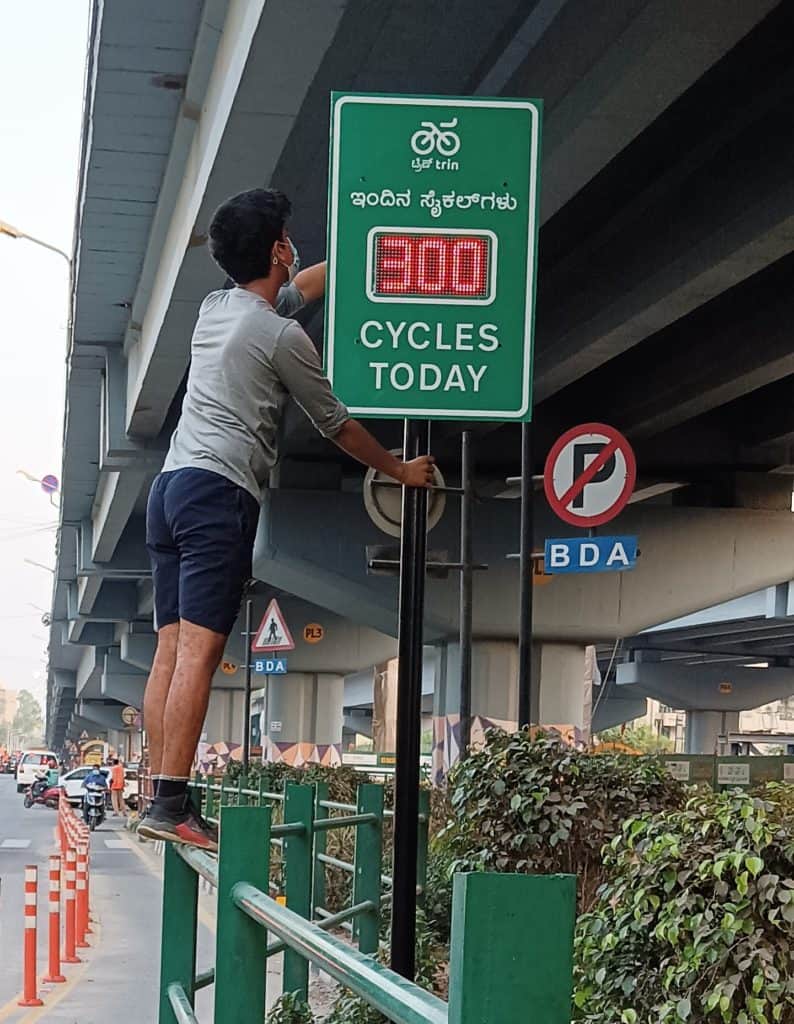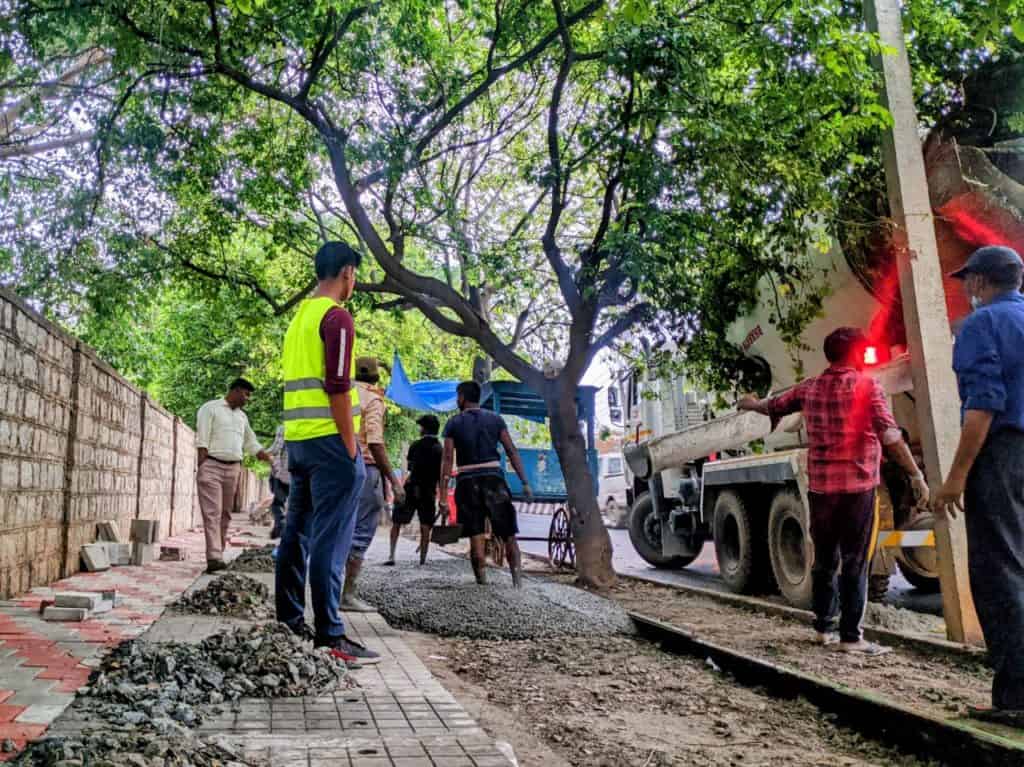It has been eight years now since we started down this path without setting any goals to reach anywhere. It was our son Nihar’s choice to learn at home by making things and working on projects rather than only through books. He proposed that to us, when he entered Class 4, as he felt that he wasn’t finding enough time to do the things he wanted to do. As parents, we valued his need to be free from systems and structures and to be motivated by his innate sense of wonder and curiosity.
Today, he is 18 and a co-founder of Urban Flow LLP – a startup focussing on developing AI-based products for urban design and mobility. He has not written any board exams yet. Based on his portfolio, Nihar has recently been accepted at the Technical University of Munich for a summer course called ‘Remaking the Streets’.
Over the years, he has engaged himself in scores of topics, such as knitting, baking, pottery, theatre, dance, trekking, skiing, paragliding, robotics, hardware and software development and urban mobility design.
Getting started with homeschooling
When we embarked on this journey in April 2014, Nihar found it difficult to come up with ideas for projects/activities as till then he was used to being told what to do. Since it was his choice to opt for “home-learning”, we discussed that he would have to figure out what he wanted to do and we would facilitate it ourselves or find a resource to support it. And that at any stage if he felt like going back to school, that option was open.
Over the years, creating, building, designing, implementing and exploring a wide range of ideas has been a continuous process for him and together we have enjoyed the freedom to choose not only to do things that we wanted to do but also more broadly to choose how we live.

Read more: Pandemic takes the fun out of preschool
Challenges in homeschooling
Though today I feel very comfortable with the idea of home-learning, I have experienced a few challenging and anxious times. Having quit my job eight years ago, I kept thinking about whether I was spending my time productively and I used to make Nihar do some Maths practice whether he liked it or not.
I also went through self-evaluation to quantify how I was contributing to his learning. My husband Rajesh, though having quit his job for his own reasons, did not experience any of these turbulences and kept bringing the focus back on setting our child “free”.
Whenever Nihar would come up with ideas for a project, our approach was to ask questions rather than give answers or just look up information. It led to him attempting to find answers logically and intuitively based on what he already knew.
Such an environment of questioning and enquiring led each one of us to reflect on ourselves and converse openly with each other. This, over a period, helped build a far more open and deeper relationship among us.
Be it about eating or spending time on devices or wanting to give up on a project because it looked challenging, our approach was to understand each other through conversations and not forcing or making rules or policing.

Read more: Homeschooling helping Chennai kids pursue their interests
It certainly wasn’t easy to hold ourselves back from directing and instructing him. Allowing him to observe the effects of his choices like falling ill due to certain food he ate and then learning moderation without us intervening, was hard as a parent. But we felt it was more important that he learns to listen to his body and make the connections between food and health.
Nihar’s excitement to repair broken gadgets found in the community e-waste bin and his enthusiasm to develop mobile apps prompted us to distinguish between a device being used as a learning tool versus just for entertainment. It helped us in not labelling everything as screen time.
Working on projects whose ideas emerged while travelling, interacting with people and perceiving certain real-world needs, he learnt to learn in order to bring the idea to its fruition. He appreciated the feeling of joy and satisfaction when what he built worked and could be used.
Try, try and try again
In the process, he learnt to observe and understand his disappointments and failures which resulted in persistence and a problem-solving attitude. Building persistence took a while and required holding his hand through the difficult times. It also helped that he saw us attempting to pick up making pottery with him, failing to make a pot for weeks but not giving up till we got there.
Nihar’s own need to know the BMTC bus arrival time to attend a theatre class inspired him to create a real-time bus tracking app. He learnt the technology that was necessary to make this happen at the age of 13. Media attention led to BMTC taking note of it, leading to Nihar volunteering and working closely with this government agency to convert his Bengaluru Buses app to the official myBMTC app.
It was an incredible experience being a child and making himself heard during meetings. More than two lakh Bengalureans used the app which gave him the satisfaction of creating a social impact.
Right at the beginning of the pandemic, he got an opportunity to work with IISc to develop a contact tracing app called GoCoronaGo. Due to stringent timelines for this project he experienced a burnout and learned to value the need for balance.
Making him aware of what was happening to him, informing him how this is experienced by many grown-ups and just being with him is what we did at that time.
He took up cycling during the pandemic and volunteered as a “Relief Rider” to deliver essentials to the sick and elderly. This helped him explore the city, its lakes and its surroundings.
He is a keen observer of public infrastructure such as roads, footpaths, ramps, crossings, signages and wants to make public spaces safer, happier and inclusive. Towards this, he has been actively involved for the past two years in the Sustainable Mobility Accord (SuMA) Doddanekundi project for ward 85 which is funded by the Directorate of Urban Land Transport (DULT).

A teenager too
The project is in the implementation phase and you will find him enthusiastically interacting with the road contractor or actually working on the road helping install cycle lane separators. With his father Rajesh’s help, he has developed an AI-based live bicycle counter that distinguishes and counts all bicycles passing by during a day in order to develop a data-driven approach to traffic engineering and to encourage and support sustainable mobility. He sees Tech for Urban Mobility as the field that he wants to work in at present.
Alongside all the social impact projects that Nihar loves doing, he is a typical teenager at heart who equally loves playing basketball and “hanging out” with his friends. Questions such as board exams and social interaction no longer cross our minds as we have seen that when a child is free and joyful, his motivation and quality of learning are phenomenal.
We have discovered that it is very much possible for a child to become an active, concerned and participative citizen without taking any lessons in Civics!
First the idea, then the learning
Anupama’s approach was largely what is termed “unschooling”. She incorporated project-based learning: A top-down approach where one has an idea of where the project fits in the real world and then learns whatever is needed to build it. “For example, Nihar wanted to build an electric unicycle when he was 11,” recalls Anupama. “But he did not know decimal arithmetic or concepts of force, torque, current, voltage, how to calculate speed, battery requirement etc. So first we observed when a wheel moves how much distance it covers, then added time to it and understood how to calculate speed, what impact the size of a wheel has etc. Similar observations and correlation happened with respect to some of the physics concepts.”
There was no fixed learning schedule or lessons. “Each one of us got our own time to engage in other things of individual interests along with learning at home together”.
Anupama looked at NIOS and IGCSE but did not consider them since Nihar decided to not write board exams. They used online resources as and when needed. For example, MIT app inventor platform to develop mobile apps, Udacity for learning Java etc. Some math and science concepts were clarified through Khan Academy videos (among others) and some borrowed IGCSE books. For software development skills, they used Hackerrank problem sets, CS50 online course from Harvard and some online courses on Coursera.
Hi, my son is also a homeschooler from last 3 years. He is 12 years old. It’s his own choice for homeschooling like Nihar. My son has started home learning from standard 3 as Nihar started. It’s almost same. Can we connect? So that we can discuss with you wherever we feel stuck.
Though each family has their own journey and discoveries to make, i will be happy to connect and share our experience when you need.
Heyy…loved the story..lots of best wishes to Nihar and all of you..we are unschoolers based in Ahmedabad. Our daughter is 7 yrs old, never gone to school..no, not because of covid, is t was conscious decision from the day we had her…
All the best to you all and thank you for your wishes!
Cheers and Admiration to Nihar and his Parents for their persistent Self-Belief and for daring to be different in a world where “swimming against the tide” is readily mocked upon
On many occasions over the past many years, his BMTC app enabled me to reliably plan many (Namma Metro+BMTC Bus) trips in Bengaluru & helped me avoid: burning petrol/causing air pollution/adding to traffic jams (using my 2 wheeler).
Nihar’s passion towards making public transport and public places more accessible and user friendly is heart warming indeed. At such a young age, he has achieved what many of us only talk and dream (or crib) about.
Respect to all of you in your family. My Admiration cannot be expressed in words. May your tribe increase
Thank you for your supportive and encouraging words and taking the time to share your views and experience of using the app.